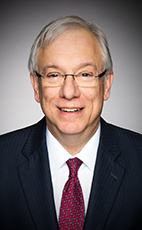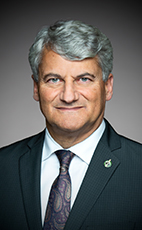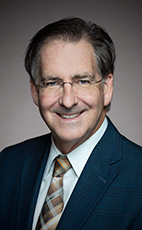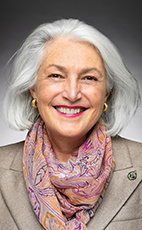44th Parl. 1st Sess.
October 28, 2022
- 12:59:48 p.m.
- Watch
- Read Aloud
I call this meeting to order. This is meeting number 33 of the House of Commons Standing Committee on Environment and Sustainable Development.
I would like to welcome Mr. Bob Benzen, Mr. Brian Masse and Ms. Emmanuella Lambropoulos, who are substituting for, respectively, Robert Kitchen, Laurel Collins and Terry Duguid.
Today we are hearing witnesses on Mr. Masse's bill, Bill C-248, to create an Ojibway national urban park in Canada.
We don't do sound tests with the committee members who are on Zoom, so I'm going to assume that everyone has a headset that is up to the standard set by the House of Commons.
As for the witnesses, our witnesses for the first hour are here, so they are not wearing headsets. We will do the tests for the witnesses coming on for the second hour.
We have with us, from Parks Canada, Mr. Andrew Campbell, senior vice-president for operations, and Darlene Upton, vice-president for protected area establishment and conservation.
You have, in total, five minutes. I don't know whether you'll be splitting your time or not, but we'll do five minutes and then go into a couple of rounds of questions.
If it is Ms. Upton who is speaking, go ahead, please.
213 words
- Hear!
- Rabble!
- add
- star_border
- share
- 01:01:31 p.m.
- Watch
- Read Aloud
Thank you and good day.
I'm pleased to be here today on behalf of Parks Canada. Let me begin by acknowledging that I'm on the unceded traditional territory of the Algonquin Anishinabe people and that the lands covered by Bill C-248 are in the traditional territories of the Anishinabe people of the Three Fires Confederacy, comprising the Ojibwa, the Odawa and the Potawatomi.
I want to affirm that Parks Canada shares the same goal as the bill, the creation of the Ojibway national urban park; however, I would like to be clear that the Parks Canada-led work is separate from the process being proposed under the private member's bill, Bill C-248, and that Parks Canada's input was not sought in the development of the bill, so there are some practical difficulties for Parks Canada that will be difficult to resolve.
I want to begin by sharing a few key facts. The bill seeks to create a national urban bank by amending the Canada National Parks Act, which is legislation that was never intended for that purpose. Unique legislation was created for the Rouge National Urban Park in Toronto for this very reason.
The study area under discussion in the Parks Canada-led process is considerably larger than the boundaries outlined in this bill, and that is yet to be reconciled. If the bill is passed, on day one, we will have no choice but to enforce the Canada National Parks Act. As such, any provincial or city infrastructure in the park will immediately become subject to our regulations. This will include everything from sewer lines to roadway allowances, which will create jurisdictional, liability and legal issues that would normally be worked out through the Parks Canada-led work currently under way, which this legislation does not take into account in its current form.
Parks Canada is creating new national urban parks across the country, and in fact has been exploring the potential of an urban park in Windsor since the spring of 2021, before this bill was tabled in the House. The proposed park is found in the traditional territory of both Caldwell and Walpole Island first nations. Walpole Island first nation is not represented by Caldwell First Nation, to the best of our knowledge, and has not been engaged in the development of the bill, to our knowledge.
The duty to consult is a constitutional requirement and needs to begin before decisions are made. Parks Canada engaged both first nations at the beginning of our work, and our process includes both nations at the partnership table. We recognize and respect the rights of indigenous peoples and are committed to the UN Declaration on the Rights of Indigenous Peoples, including free, prior and informed consent.
This bill will essentially create an instant park by shortcutting around some important steps, leaving details to be worked out after the fact. It assumes a particular governance model by automatically transferring the administration, management and control of the park to the federal government. Under our national urban park program, we have the flexibility to consider partnership-based models, but the bill will not allow for that possibility in Windsor.
The private member's bill is a new and unknown territory. No national park or national urban park today has been created this way. Under normal processes, land transfers would be negotiated in advance. Complete and meaningful consultations would occur with indigenous peoples, stakeholders and the public, and the funding to operate the park would be secured. In the case of Windsor, none of those steps have been completed yet, and they are ongoing in our process.
This means that the path to implementing the bill is uncertain and that many important questions remain unanswered. For example, who would be responsible for existing liabilities on lands? Who would be responsible for maintaining public infrastructure in the park? These questions are not dealt with through a management plan. They relate to the rights and legal obligations that, if not respected, can result in significant liability to the government.
Parks Canada is committed to creating a national urban park in Windsor, and we're making rapid and significant progress, already working closely with other jurisdictions and indigenous partners. Through our process, we will work with partners to add value to the existing parks and natural areas in Windsor, building on Parks Canada's successful record of accomplishment in creating parks from coast to coast to coast that Canadians hold dear.
Thank you very much.
754 words
- Hear!
- Rabble!
- add
- star_border
- share
- 01:05:59 p.m.
- Watch
- Read Aloud
Thank you, Ms. Upton.
We will move on to the first round of questions.
Mr. Deltell, you have six minutes.
22 words
- Hear!
- Rabble!
- add
- star_border
- share
- 01:06:13 p.m.
- Watch
- Read Aloud
Thank you very much, Mr. Chair.
Good afternoon, colleagues.
Welcome to your House of Commons.
16 words
- Hear!
- Rabble!
- add
- star_border
- share
- 01:06:25 p.m.
- Watch
- Read Aloud
On a point of order, Mr. Chair, I don't know for sure if the translation is coming through.
19 words
- Hear!
- Rabble!
- add
- star_border
- share
- 01:06:30 p.m.
- Watch
- Read Aloud
Are you hearing the English interpretation when I speak in French?
Okay. Go on.
14 words
- Hear!
- Rabble!
- add
- star_border
- share
- 01:06:40 p.m.
- Watch
- Read Aloud
Mr. Campbell and Ms. Upton, welcome to your House of Commons. Thank you for your commitment to the Canadian public within Parks Canada.
First, I would like to know more about the process that led to the recommendation or support for a project like this. Did you conduct a financial and ecological analysis of the spinoffs of creating such a park?
63 words
- Hear!
- Rabble!
- add
- star_border
- share
- 01:07:09 p.m.
- Watch
- Read Aloud
We have a process that begins with all the partners around the table. We apply three steps for exploring every topic from boundaries, to governance and many other things.
The first step is a feasibility study. We consult all the interested parties and determine whether they want the project to move forward.
After getting agreement from all the parties, we move on to studies and researching information to establish the park. This could include the ecology, boundaries, leases and occupation permits. We try to settle all those types of things.
After completing that step, we create the park and make the necessary announcements.
103 words
- Hear!
- Rabble!
- add
- star_border
- share
- 01:08:20 p.m.
- Watch
- Read Aloud
Let me begin by congratulating you on the quality of your French and thanking you for speaking in our language. We greatly appreciate it.
When creating a park like this, are these the steps that you want to take or do you launch a consultation and contact all those who want to be consulted?
My real question is whether the indigenous community that is directly affected—obviously we heard from the community—is at the root of this step or if you initiated it.
86 words
- Hear!
- Rabble!
- add
- star_border
- share
- 01:08:49 p.m.
- Watch
- Read Aloud
We met with the indigenous communities at the start of the project and asked them whether they were interested in this. We now have agreements and we also support their participation in this process from a financial perspective.
My colleagues may be able to speak to other relationships we have with respect to this project in connection to other activities.
60 words
- Hear!
- Rabble!
- add
- star_border
- share
- 01:09:19 p.m.
- Watch
- Read Aloud
The two first nations that are next to the park and who have land in the park are the Walpole Island First Nation and the Caldwell First Nation. We already have relationships with these two first nations in connection to the Point Pelee National Park. These two nations have rights to this land. That is why it is necessary to consult the two groups.
64 words
- Hear!
- Rabble!
- add
- star_border
- share
- 01:09:54 p.m.
- Watch
- Read Aloud
That is what I was getting at. In my riding, there is the Huron-Wendat Nation of Wendake, which I have had the great privilege of representing for the past seven years and four days. We know that land claims are a very sensitive topic for every Canadian nation. There is a specific case in my riding, but I will not get into that here because it is not about a park.
It is clear that the first nations have differing points of view. Within Parks Canada, how do you manage the situation if, by chance—I am not talking about this specific case—a nation or an indigenous community complains about the creation of a park, but two other first nations look at the same part of the country, the same land and say that it belongs to them? What do you do?
146 words
- Hear!
- Rabble!
- add
- star_border
- share
- 01:10:44 p.m.
- Watch
- Read Aloud
That is the case across the country.
7 words
- Hear!
- Rabble!
- add
- star_border
- share
- 01:10:48 p.m.
- Watch
- Read Aloud
2 words
- Hear!
- Rabble!
- add
- star_border
- share
- 01:10:49 p.m.
- Watch
- Read Aloud
It is an interesting question.
For example, in the Rouge National Urban Park, there are seven distinct groups who have land there. The Huron-Wendat Nation is part of it as well because it has history in that region. That is why it is better to bring the groups together and establish a park management system or a business or management plan for each park. We have noticed some competition between the groups. Sometimes there are disputes between them, but usually it is possible to create good relations between every group and the Government of Canada.
96 words
- Hear!
- Rabble!
- add
- star_border
- share
- 01:11:41 p.m.
- Watch
- Read Aloud
4 words
- Hear!
- Rabble!
- add
- star_border
- share
- 01:11:43 p.m.
- Watch
- Read Aloud
The process for creating protected areas takes time. It calls for creating relationships and waiting.
Although it takes time, it is worth it. At the end of the process, we have a place that will often be co‑managed, which is good for everyone.
45 words
- Hear!
- Rabble!
- add
- star_border
- share
- 01:12:01 p.m.
- Watch
- Read Aloud
In closing, I would like to make two observations.
Obviously, these are always sensitive situations. However, it is neither entirely for the federal authority to decide nor for the first nations to find common ground for everyone to win. I think many projects, if not all, deserve the contribution of indigenous peoples. They need to be viewed as partners in prosperity.
Thank you very much for speaking in French, Mr. Campbell and Ms. Upton.
76 words
- Hear!
- Rabble!
- add
- star_border
- share
- 01:12:30 p.m.
- Watch
- Read Aloud
Thank you, Mr. Deltell.
Ms. Thompson, you have the floor.
12 words
- Hear!
- Rabble!
- add
- star_border
- share
- 01:12:43 p.m.
- Watch
- Read Aloud
Thank you, Mr. Chair, and thank you to Parks Canada as the witness.
Perhaps I could begin by referencing the legislation. This bill is using legislation for the creation of national parks or a national park reserve in order to establish a national urban park.
Does Parks Canada have any concerns about creating a national urban park using this legislation?
60 words
- Hear!
- Rabble!
- add
- star_border
- share
- menumenu
- notificationsnotifications
- home
- mailmail
- searchsearch












